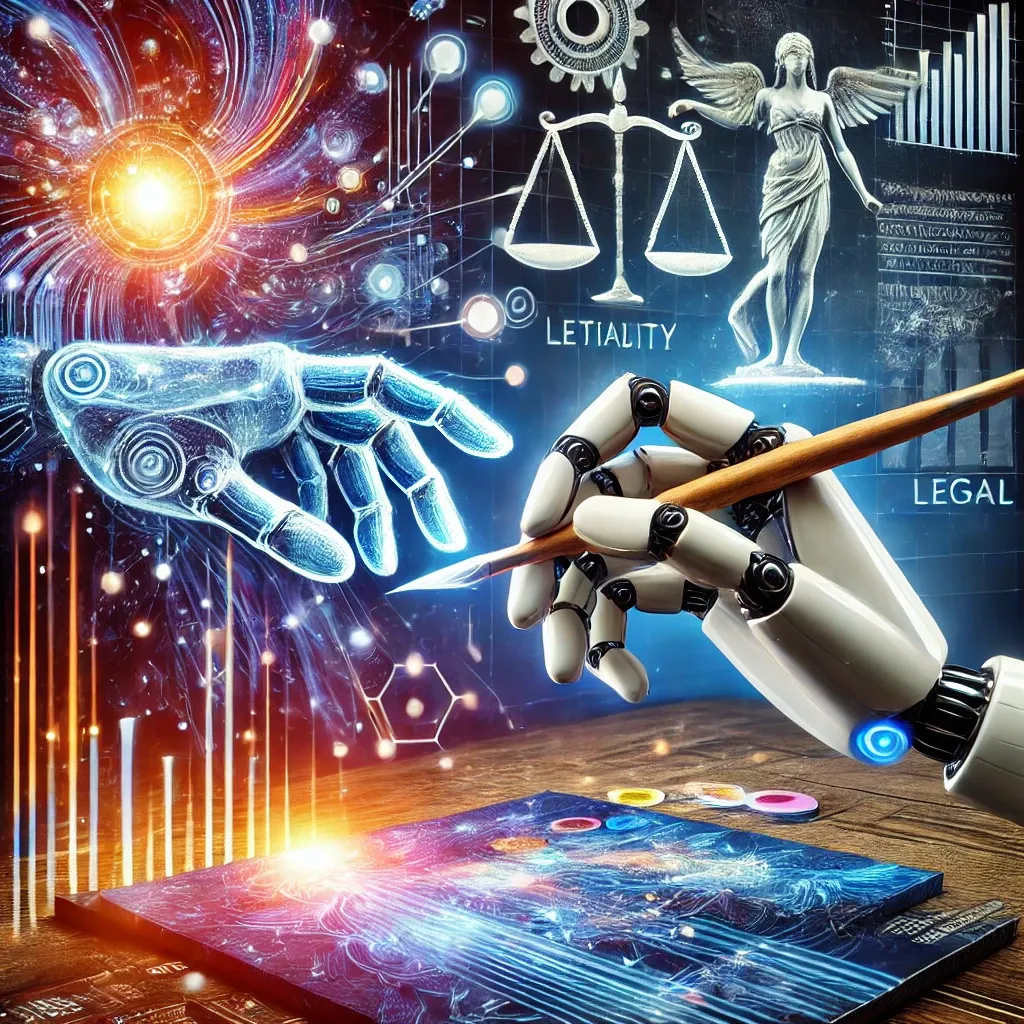Generative AI has revolutionized the way content is created, whether it’s art, music, text, or other forms of content. By leveraging advanced machine learning models, it generates outputs that closely mimic human creativity. However, with this advancement, numerous legal challenges have arisen in the domain of copyright. Let’s explore these issues and opportunities, supported by examples from recent court cases that shed light on this evolving legal landscape.
Legal Challenges of Generative AI
1. Copyright Ownership
The primary question is: who owns the copyright for AI-generated works? Current copyright laws in many countries only recognize human creators as eligible for copyright protection. For example, the U.S. Copyright Office recently denied copyright protection to an art piece generated by the DABUS AI system because it lacked human authorship. This case highlights the need for policymakers to redefine the concept of authorship in the context of AI.
2. Use of Training Data
Generative AI systems rely on massive datasets for training, which often include copyrighted material. This raises concerns about whether using such material constitutes copyright infringement. In the Authors Guild v. Google case, the court ruled in favor of Google, stating that the use of copyrighted material for training purposes falls under "fair use." However, the scale and nature of AI training data may complicate this argument in future cases.
3. Derivative Works
When generative AI produces content resembling or incorporating elements of existing works, the issue of derivative works arises. For instance, the Andy Warhol Foundation v. Goldsmith case addressed the boundaries of transformative use, which has significant implications for AI-generated works.
4. Accountability for Infringement
If an AI system generates content that infringes copyright, who is responsible—the developer, the user, or the AI itself? This question remains unresolved, creating legal ambiguity.
Opportunities in Copyright Law through Generative AI
While generative AI presents challenges, it also opens avenues for innovation in copyright law:
1. New Licensing Models
Generative AI could pave the way for innovative licensing agreements, where copyright holders license their works for AI model training. Companies like OpenAI and Shutterstock are forming partnerships to ensure fair compensation for creators.
2. Enhanced Creative Collaboration
AI systems can act as co-creators, enhancing human creativity. In the future, courts might recognize joint authorship between humans and AI, leading to new frameworks for shared copyright ownership.
3. Technological Solutions for Copyright Enforcement
Technological advancements like blockchain and digital watermarking can help track and manage copyrighted content in AI training datasets and outputs, providing transparent solutions to copyright disputes.
Case Studies Highlighting Legal Precedents
Thaler v. Commissioner of Patents (Australia)
The Australian Federal Court initially ruled that AI could be listed as an inventor. However, the decision was overturned on appeal, sparking global debates on AI’s role in authorship and creativity.
Zarya of the Dawn v. U.S. Copyright Office
Creators of the AI-generated comic Zarya of the Dawn applied for copyright protection. While the text was granted copyright protection, the AI-generated images were excluded, underscoring how current copyright laws prioritize human creativity.
The Way Forward: Balancing Innovation and Protection
Generative AI is a double-edged sword for copyright law. On one hand, it democratizes creativity and accelerates innovation. On the other, it challenges legal frameworks designed for human authorship. To maintain balance, stakeholders must:
- Revisit copyright laws to explicitly address AI-generated content.
- Foster collaboration among AI developers, creators, and legal experts.
- Encourage global dialogue to establish harmonized international standards.
As generative AI evolves, so will the associated legal and ethical debates. By proactively addressing these challenges, we can ensure that the opportunities presented by this technology are not overshadowed by unresolved legal disputes.
Conclusion
Generative AI is reshaping creativity and transforming the understanding of copyright. By learning from recent court cases and adopting innovative solutions, we can navigate this complex landscape and unlock the full potential of AI while safeguarding creators' rights. The road ahead may be uncertain, but it is filled with opportunities for growth and collaboration.
"The law must keep pace with technology, or risk becoming obsolete." — Anonymous Legal Scholar
Now is the time to redefine the intersection of creativity, technology, and law.
